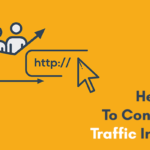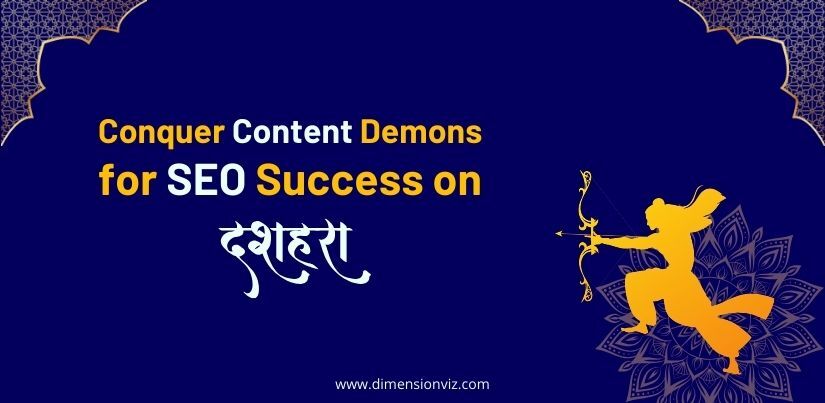Successful Content Strategy For Higher Ranking
One of the most crucial ranking factors is content. This has numerous times been demonstrated by SEO experts and mentioned by Google.
Search engines have advanced significantly, and they no longer only use keyword matching. So, content optimization entails much more than just stuffing a page with keyword-related content.
I’ll outline all the steps involved in content optimization for your pages in this section.
The Importance of Content Optimization
Making your information visible to search engines and your intended audience is a process known as content optimization.
Search engines can better understand your pages thanks to content optimization. The likelihood of being ranked higher increases with properly optimized content.
Making your pages more reader-friendly also improves their content. As a result, you produce enjoyable content that is understandable.
How can you ensure that your content is properly optimized and that nothing is preventing your pages from ranking?
1. Perform a keyword search
To comprehend the subject of your content and rank your page following the search query, search engines need keywords. Having said that, keyword research aids you in selecting the keywords that will increase traffic to your pages.
Consider seed keywords first; these are the most straightforward and pertinent words and phrases that describe your topic. For instance, if you sell furniture, simply go over your inventory and create seed keywords for each item. As a result, you could purchase items like sectional sofas, coffee tables, custom furniture, modular furniture, etc.
Second, add more appropriate keyword options to your list of seed words. There are several techniques for locating keywords. The most well-liked ones consist of:
- Look for search autocomplete suggestions: type a keyword into the search bar to see the suggested queries.
- Gathering related keywords: By including words or phrases that are synonymous with your target keywords, you can increase the number of keywords that search engines will rank your content for. This will assist you in reaching an audience outside of your primary target. Additionally, using related keywords prevents keyword stuffing.
- Discovering the keywords that your rivals are using will help you add those to your keyword list.
Third, be aware of the search objective. Different pages serve various functions. For instance, some of them are designed to inform users, while others are made to force users to take the desired action. They all call for keywords with the appropriate intent.
Four main categories of search intent exist:
- Informational – a user searches for information, such as British television programs or Soho restaurants
- Navigational – without entering a URL, a user searches for a specific website or article
- Commercial investigation – a user searches for top lists, and product comparisons, and frequently starts a query with the words best, most, etc.
- Transactional – when a user is ready to buy, they search for offers; typical terms include price, buy, and buy online.
For instance, if the goal of your new page is to ensure transactions, you should focus on the relevant keywords that include words like buy, purchase, etc.
Select the appropriate keywords from your list based on the type of search intent.
2. Implement Keyword Mapping
As soon as you’ve gathered your keywords, group them and add them to the appropriate website pages.
A keyword map can help you organize the content of your website and prevent keyword duplication.
When you target the same group of keywords on two different pages, it is known as keyword cannibalization. These pages will compete with one another for rankings.
Try to group extremely similar keywords into one topic, or keyword group, to prevent this. Two identical pages on your website are less preferred by search engines than one valuable comprehensive page.
You can create your keyword map. Just manually match up your pages with the keyword groups in an Excel or Google Sheet.
3. Organize Your Writing
Create an easy-to-read page. Search engines and actual users alike prefer content with distinct points, a logical flow, and a clear message.
Make your text succinct, well-structured, and understandable to search engines to achieve content clarity.
Here are some crucial ideas to make sure the content is clear.
Meta descriptions and heading tags
Search engines can learn more about your content by reading the title tags and meta descriptions. Additionally, whenever your page appears on a search engine results page, this is one of the first things users see.
People are more likely to click on your link when it has a compelling title and meta description, which may also help you rank higher.
Your titles should be 50 to 70 characters long. The meta description has a character limit of 120–150.
Make sure the most crucial keywords are included in your meta descriptions and title tags. Put the keyword closer to the start of the title. Keep in mind the purpose of the search. For instance, the title of your page should include the appropriate intent markers, such as best, top, and most, if it serves an investigative purpose.
Segments
Keep your words succinct and simple to understand. Cut your subject into manageable chunks. Make sure that each paragraph in these works is no longer than 3-5 lines. Search engines and users can find what they’re looking for quickly thanks to text segmentation.
Each paragraph should contain a complete thought because it is a meaningful unit. Make sure that each section of your text provides the reader with useful information. While some readers will skim the entire text, others will only read the passages that directly address their concerns.
Headings
Your content is organized and made easier to follow by headings. A step-by-step format like this necessitates the use of various heading types, such as H1, H2, H3, etc.
SEO-critical is the H1 tag. A page should only have one H1 heading. Don’t forget to include relevant keywords in it and keep your H1 to no more than 70 characters. Stay consistent; H2 should come after H1, and H3 should come after H1. Avoid being spammy; too many pointless headings are disliked by search engines and lessen their value.
Implementation Of Markup
A piece of code called schema markup makes your page simple for search engines to understand.
Additionally, if your web pages already have some authority, markup implementation increases your chances of getting a rich snippet or showing up in a knowledge panel.
Without any coding knowledge, you can easily create relevant Schema markups for your pages using one of the many markup generators available. I advise using Merkle’s Schema Markup Generator or Google’s Structured Data Markup Helper.
Page quality overall
Verify that your content satisfies the requirements that search engines set for it to rank highly:
- The use of keywords in the title, meta description, body text, headings, alternative texts, and link anchors.
- Aim for a reasonable keyword density; avoid stuffing your text with keywords.
The first point is obvious: you must include keywords in all of these elements so that search engines can understand your page’s content quickly.
Regarding keyword density, bear in mind that modern search engines attempt to read content like that of readers. Yes, keywords inform search engines about the subject matter of your content. However, overusing keywords in texts can harm rankings just as much as it does readability.
Read your message. It’s the right number of keywords if they don’t hinder reading.
4. Consider your writing style
Ensure consistency and directness in your writing. Here are a few principles to follow:
- Ensure that your subject is instructive enough to merit a full webpage. Make the most of the topic’s potential. Low-quality content has a poor chance of ranking. Furthermore, low-quality content may result in manual actions being taken against your entire website.
- Keep in mind that your goal is not to namedrop or briefly mention topics you won’t be discussing. Search engines and readers don’t want to waste time trying to figure out what the content is about. Write articles that address readers’ inquiries. Provide as much information as you can on the page to prevent readers from leaving it to look it up elsewhere.
- Make your content easy to understand by using clear, straightforward language. Additionally, if a sentence is too long, consider breaking it up into several shorter ones.
- If you want to receive that added value and have less competition, you must have original content. Personal experience, which is never identical, can help one be unique. Include your perspective and add case studies, experiments, and success tales to the content to make it more interesting.
Write in the same voice throughout. Look for repetitions, inconsistencies, and irrelevant points in the writing. Even the most tolerant readers become discouraged by poor proofreading.
5. Add a call to action
CTAs facilitate user navigation through your website, direct users to key pages, and increase conversion rates.
There are several types of CTAs:
- Submission of a contact form
- Submission of an order form
- Button to read more
- Using social media to share
- Subscription to a newsletter
- Enrolling in an event
Each of them expresses a user’s desire to learn more about the content. But to get conversions, CTA placement must be done correctly.
First, pay attention to one CTA per page. Placing it correctly. Consider where that natural urge to click occurs as you read the text. You can use specialized tools that give you a heatmap to find the most clickable areas of a page.
Second, avoid being overly general; instead, make your CTA unambiguous so that users will understand what to expect after clicking. Try to keep your response to a maximum of 5 words, though.
Third, concentrate on including only the CTAs that are essential to you. Users may prefer forms for downloadable content, for example, if there are too many of them, over a button for a free trial.
6. Include Visuals
Our attention span is increased by visuals. They aid in maintaining attention, processing information, and recalling its main points. There is a greater chance that users will stay on your page or share your content because the images are engaging.
To make your content easy to understand, be creative and use infographics, graphic quotes, photos, memes, GIFs, and infographics.
Content with graphics or images, for instance, receives up to 94 percent more views than plain text. Additionally, it has been claimed that including videos in publications boosts content sharing and grows organic traffic by 157 percent.
While search engines prefer visuals that are search engine optimized, people prefer content that is illustrated. While optimized videos can even show up on SERP, well-optimized images might rank highly in Google Images and bring you traffic from there.
Here are some things to do if you want your videos and images to rank highly:
For Videos
- When embedding videos into the content of your website, pick well-known and secure video hosting services.
- To help search engines understand what a video is about, complete the title tag.
- Use keywords in your titles, but put the reader’s interest first.
For Pictures
- Verify the largest image size that your website can handle without issue.
- Add alt tags, and give your images meaningful names.
- To summarise or explain visuals, write captions.
7. Link to fresh content
Internal links directly contribute to the optimization of content:
- Interlinking makes it easier for search engines to discover new content;
- Linking to a new page from some of your already-existing, highly-ranked pages passed link juice to the new page, giving it more authority;
- Internal links facilitate navigation, increase user engagement, and reduce bounce rates.
Make sure relevant pages link to your new content. Pay attention to the anchor texts; they should be sufficiently illustrative of the content to be found on the new page for both readers and search engines. Limit your use of interlinking. The value of each link is reduced when there are too many interlinks on a single page.
8. Keep the material current
If you already have a page on a pertinent subject, even one that is several years old, there is no need to create another one. Change it. Change the year, revise a few facts or examples, and your page will be back in order.
When should a page be updated?
- Even though a keyword on a page is still relevant, the content has become dated.
- Although a page’s statistics decreased, it is still relevant. This is verifiable in Google Search Console.
- A page’s subject has recently become more important after a period of inactivity.
9. Check for technical problems
A wide range of factors that affect your website’s crawlability and ranking potential are included in technical SEO.
Don’t let technical issues undermine your efforts once all the content work has been completed.
What things need to be remembered?
- Protection level. Your optimization efforts may as well be for naught if a user’s attempt to access your website results in a warning that it is insecure.
- Page accessibility. You lose out on your chance to rank if your resources are broken or if pages are blocked from indexing.
- Page speed. Your position in search results is influenced by how quickly the page loads. Fast-loading pages are given priority by search engines.
- URL organization. SEO-friendly URLs are preferred. Keep the semantics clear and stay away from special characters.
- Mobile-friendliness. Maintaining a functional mobile website will give you a significant ranking advantage since Google switched to a mobile-first indexing system.
All the points are quite clear, but a closer examination of mobile friendliness is necessary.
Since a few years ago, Google has been using a mobile-first indexing strategy. It implies that Google’s algorithms now begin analyzing a website’s mobile version. Therefore, websites that have a sophisticated mobile version are more likely to rank highly.
A responsive web design option is probably best if you want to quickly and easily adapt your website to mobile devices.
The list of technical criteria the tool compares your page against will be visible to you. The icons will alert you to errors or give you a heads-up about potential problems.
10. Work on building links
One of the most crucial ranking factors is the number of backlinks. They aid in increasing page authority and traffic, which raises the ranking of your pages.
Verify that existing backlinks are in good shape before looking for new link opportunities.
Start by repairing any broken or redirected backlinks. With the aid of the SEO SpyGlass tool, you can accomplish this. Open the software, enter a website into the project, and select the Backlinks tab. You can check all of your backlinks right here.
You’ll observe
Metrics like backlink authority, domain in link rank, do-follow or no-follow status, and external sources linking to your pages.
Linked Page Status Code should be added to the table of metrics to identify broken or redirected links. A backlink that has been temporarily or permanently redirected will have a 302 or 301 status, respectively. A 404 status code indicates that it is broken.
Check the do-follow and no-follow statuses carefully. Dofollow links should be fixed first since they are what pass PageRank to your pages.
Therefore, you can start looking for new backlinks after you have fixed your current ones.
There are numerous methods to obtain a backlink:
- Guest blogging
- Take part in video or podcast interviews
- A case study exchange
- Host or support a gathering
- Allow portfolio backlinks
- Boost social media accounts’ ability to backlink
- Get backlinks from mentions and reviews
- Request a backlink from your customer’s or business partner’s websites.
- Identify the broken backlinks of your competitors and request that the providers replace those links with yours.
11. Using social media to boost traffic
Although sharing your content on social media may not directly improve your rankings, it will undoubtedly increase brand awareness and traffic.
If you are a local business owner, pay close attention to the social media coverage you receive. In this case, social signals are a ranking factor, so seize the chance.
Here are some pointers to maximize your use of social media:
- Post frequently, engage your audience, engage users, and work with influencers.
- To increase the visibility of your social network profiles and posts, use keywords in the bot
- Put social media sharing buttons on your website so that visitors can share your content directly to their accounts.
Final Word
You can see that doing content SEO correctly, which entails utilizing text, images, and links, will significantly improve your rating. If you want to have your sites appear at the top of Google SERPs, get in touch with us.







